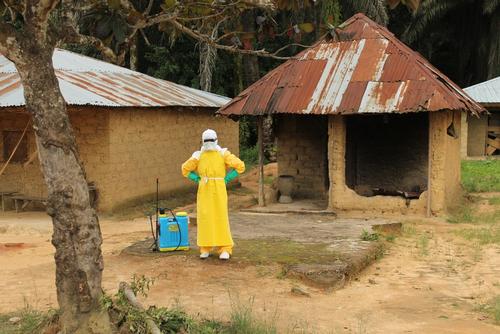This article first appeared in Wall Street Journal on September 11th 2014.
Although Syria and Iraq get most of the international headlines, the Ebola outbreak in west Africa is a biological crisis of historic proportions: Three states are at risk of collapse and tens of thousands could be infected. Medical personnel say the disease is spiraling out of control.
The international response must become more serious.
Unlike the crises in the Middle East or Ukraine, there is no human adversary plotting against us. The real challenges are complacency and indifference. That the United States should be so slow to respond even after last month’s Africa summit in Washington is especially regrettable.
Outbreaks of Ebola dating to the mid-1970s have typically killed a few hundred victims. Traditionally, the virus’s hemorrhagic fevers kill more than half of those infected in experiences akin to those in fictional thrillers. One of those outbreaks, in the Democratic Republic of the Congo (formerly Zaire) in 1991, affected a city where one of us served as a Peace Corps volunteer. Kikwit’s poor nutritional and public health conditions made the population vulnerable to contagious disease and complicated response efforts. Until this summer, however, even severely stressed developing countries have, with international assistance, mustered responses to outbreaks that contained the affected population to one small area.
Unfortunately, this time is different. Already, more than 2,000 are dead, mostly in Liberia, Sierra Leone, and Guinea. Infections have also been reported in Nigeria and Senegal. Health-care systems are stretched beyond capacity; patients travel, sometimes across borders, in pursuit of treatment but are often unsuccessful.
In Liberia, the situation has been aggravated by public distrust of official response efforts and religious and cultural customs that involve close proximity to and physical contact with the recently dead. People are learning to seek help when infected–to improve their prospects for survival and to protect their families. Help, however, is often elusive: Victims reportedly travel from hospital to hospital in search of not rooms but just a mattress to sleep on. Conditions are such that rudimentary care like an IV to help with rehydration is considered a luxury. As they roam between clinics, many of these people contaminate taxis.
So far, the international response to this public health tragedy has been inadequate. Thousands of beds need to be made available, as well as experts who can trace victims to their villages to help protect exposed populations. Proper burial practices are essential. People are dying from a disease that may not have a cure but is containable. Yet the initial U.S. offerings included a 25-person mobile hospital–only for health workers who may become infected–and some diagnostic capabilities. Doctors Without Borders and the Centers for Disease Control and Prevention say that a military-scale operation is needed to contain the epidemic.
There is no excuse for Washington’s austere response to date. The U.S. Agency for International Development announced a larger operation last week, but deploying those resources will take time Africans don’t have. A more urgent response involving U.S. military assets is needed. The U.S. military is busy, to be sure, but its deployments to war zones are about a fifth the size of those in the late Bush and early Obama years. Moreover, the units that would help with medical response largely differ from those in Afghanistan, Djibouti and the Persian Gulf.
Even if the U.S. military lacks extensive capacity for aid, it leads the world in the sort of massive logistics capabilities needed to create rudimentary clinics and hospital facilities.
By acting at the appropriate scale and speed, the U.S. and its partners could reduce the risk of this crisis reaching European or American shores. And that is most likely to happen not through the medevacs that recently carried out U.S. missionaries but through unwitting international travelers.
The options are clear: We can act now. Or we can act later at much greater expense and risk to our societies.





